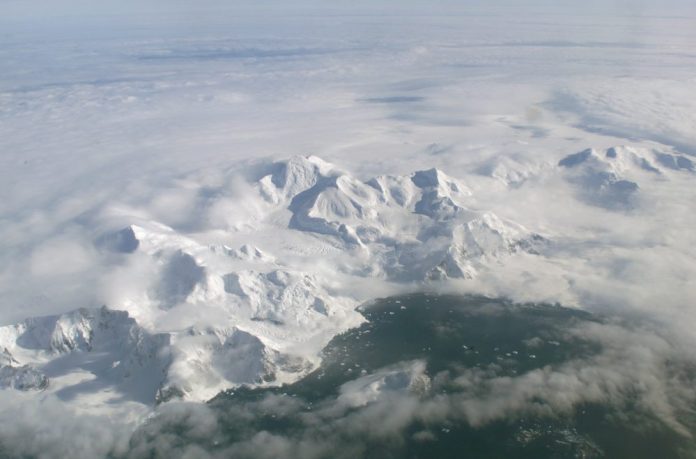The massive one-trillion tonne iceberg that broke off in Antarctica in July, has just revealed a hidden ecosystem that was frozen for nearly 120,000 years.
As the iceberg, known as A-68, moves away from the Larsen C ice shelf and into the Weddell Sea, it will eventually expose 2,240 square miles (5,800 square kilometers) of seafloor that has been buried under the ice for up to 120,000 years, without light and linked to the open ocean only by minimal currents, according to scientists with the British Antarctic Survey (BAS).
Now, scientists are keen to begin exploring the newly exposed area as soon as possible, to conduct research on the hidden ecosystem that can be used to make comparisons with any changes that occur over the years to come.
“It’s just a fantastic, unknown area for scientific research,” said Susan Grant, a marine biologist with the BAS. “We know very little about what might or might not be living in these types of areas, and especially how they might change over time.”
Grant is one of two BAS scientists who led a successful proposal for international protection of areas on the Antarctic Peninsula that are exposed when floating icebergs break away from the coast-bound ice shelves.
The Larsen C area will be the first to benefit from a 2016 agreement by the Commission for the Conservation of Antarctic Marine Living Resources (CCAMLR), an international conservation agency, following the proposal by Grant and her colleague Phil Trathan, head of conservation ecology for the BAS.
The designation of the newly exposed region as a special area for scientific study will prohibit commercial activities like fishing and tourism for an initial period of two years, with an option to extend the protection for another 10 years after that, and potentially indefinitely, according to the BAS.
Studying the area exposed as the A-68 iceberg floats away from the coast will let scientists learn more about such events, which are expected to become more common, including how wildlife responds as the ecosystem changes, Grant said.
“There’s this vast area which has been covered for thousands of years,” Grant told Live Science. “We know the physical changes are likely to be huge when the ice moves away, and the ecosystem is likely to change along with that.”
Grant added that there is no evidence that this event is a direct result of climate change, but “we do expect that these sorts of things may happen more frequently in the future, so understanding how things respond to this kind of change is really important”
Scientific knowledge of the ecosystems below Antarctic ice shelves is mainly limited to the results of two German expeditions to the Larsen A and Larsen B areas, located north of Larsen C on the Antarctic Peninsula, where sections of the ice shelf broke away in 1995 and 2002, Trathan said.
“It took 5 years and 12 years for scientists to actually get into Larsen A and B, and by that time, there was already a lot of colonization [by new species] going on,” Trathan told Live Science.
The regions covered by ice shelves were entirely without sunlight, and there was no “marine snow” of dead phytoplankton and feces of zooplankton and fish — a crucial food resource in other parts of the ocean, Trathan said. [Antarctica Photos: Meltwater Lake Hidden Beneath the Ice]
“Life there is sparse,” he said. “The working hypothesis is that it is similar to the very deep oceans, but that is something that needs to be tested.”
Scientists suspect there are rapid changes to the ecosystems of the seafloor and the water above in newly exposed areas, Trathan said.
“You’ll have sunlight, you’ll have phytoplankton, and you’ll begin to get zooplankton and fish in there pretty quickly. You’ll probably also get seabirds and marine mammals are going to begin to forage in that area,” he said. “So, it will be sort of a chain reaction — as you get productivity happening then you’ll get more species coming in, and so there will be quite significant changes over relatively short time scales.”















